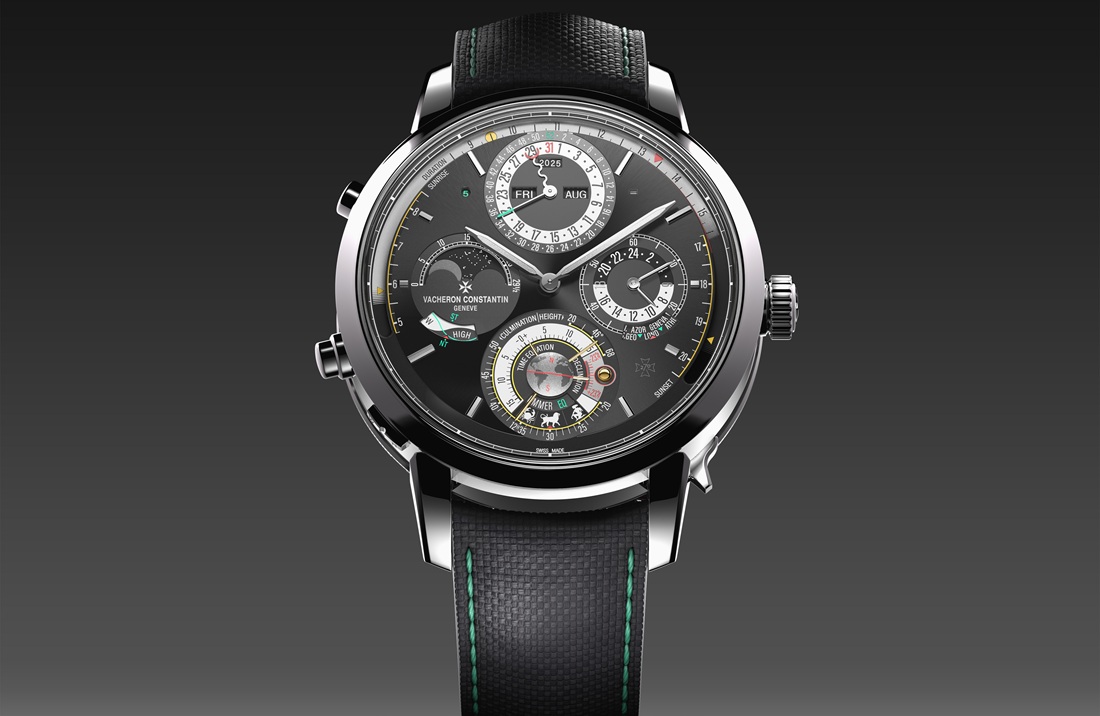
The End of the Beginning: Greubel Forsey Double Tourbillon Historic Edition Watch
To say that the first decade of the 21st Century was a boom time for the watch industry would be an understatement. This period totally reshaped the watch industry forever, with its surge of new styles and high-end pieces. While the effects from this period have been prematurely cut-short by the era end’s economic slump, the best newborns of this age will endure. Unique among this period was a sincere effort by high-luxury want brands to thrust themselves into the public’s eye. Traditionally shy brands used new media tools (such as the Internet) to spread word of their multi hundred thousand dollar plus timepieces into the mainstream spotlight. An horologically unaware populous must have been keenly confused and shocked by what they saw. Image that your watch world consisted of Swatch, Casio, and Timex — only to view the decorated mechanical splendor that is the exposed movement of a Greubel Forsey watch.
Among the many shock-and-awe with price watches out there, Greubel Forsey, born around 2004, is among the few that is still able to beguile the mind after one learns the price. Perhaps it is this reason why watch brands are normally so hesitant to communicate how much their watches cost.
The first Greubel Forsey watches ever announced played games with the complex object of desire known as the tourbillon. The complication in and of itself is difficult to produce, but it wasn’t inspiring enough for founders Robert Greubel and Stephen Forsey. Greubel Forsey insisted that its brand character was all about pushing the envelope of “the complex.” The brand sought to make the standard tourbillon boring and unremarkable. They did this by further complicating the tourbillon escapement mechanism, which led to the release of the original Greubel Forsey Double Tourbillon-style movement. It was essentially a tourbillon within a tourbillon. The inner one angled at 30 degrees, while the outer tourbillon spun normally in a horizontal position. Practical in execution? Not really. The tourbillon has never been about practicality or added functionality. Watch makers like to remind watch buyers why the tourbillon was first invented back in the golden age of pocket watches – to attempt to cancel out the rate modifying effect of gravity. What they fail to mention is that the tourbillon’s effectiveness was never really proved, and that it was designed for a pocket watch, not a wrist watch. Tourbillons returned as a challenge for watch makers, who sought to miniaturize the visually splendid complication back in the 1980s. A few decades of “one-upsmanship” has led to the entity that is Greubel Forsey with its tourbillons within the tourbillon.
The appeal of the original Double Tourbillon has always been about the gorgeous craftsmanship and view of the movement in action. As a limited edition, the watch will now see its final pieces being created — signaling an end to the Double Tourbillon movements originally released several years ago. These final pieces bear the name “Greubel Forsey Double Tourbillon Historic Edition” and will be offered as 11 pieces in 18-karat red gold, and 11 pieces in platinum. The “Historic” part of the name might be a bit self-complimentary, but the meaning to fans of the brand is clear.
Each Greubel Forsey watch includes a staggering amount of time and effort involved in its production, most of which is involved in micro finishing and decoration of the movement. As modern as the pieces are, they still embody a spirit of watch making that is hundreds of years old. The Greubel Forsey Double Tourbillon Historic Edition is 44.5-mm wide with a movement that features a front and side exposed (through sapphire crystals) double tourbillon, a subsidiary seconds dial, the hours and minutes via the main hands, and a power reserve indictor. The dials are solid gold, and milled with high relief markers. Priced at $440,000 in red gold and $460,000 in platinum — each limited to just 11 pieces. www.greubelforsey.com.
1. 44.5-mm wide case in red gold or platinum
2. Subsidiary seconds dial
3. Power reserve indicator for movement
4. Double tourbillon escapement with four-minute outer tourbillon
Ariel Adams is the Haute Living Watch Editor and also publishes the luxury watch review site aBlogtoRead.com.
 SIGN UP
SIGN UP











